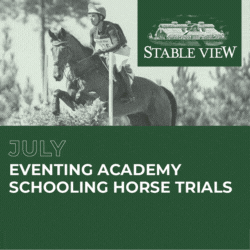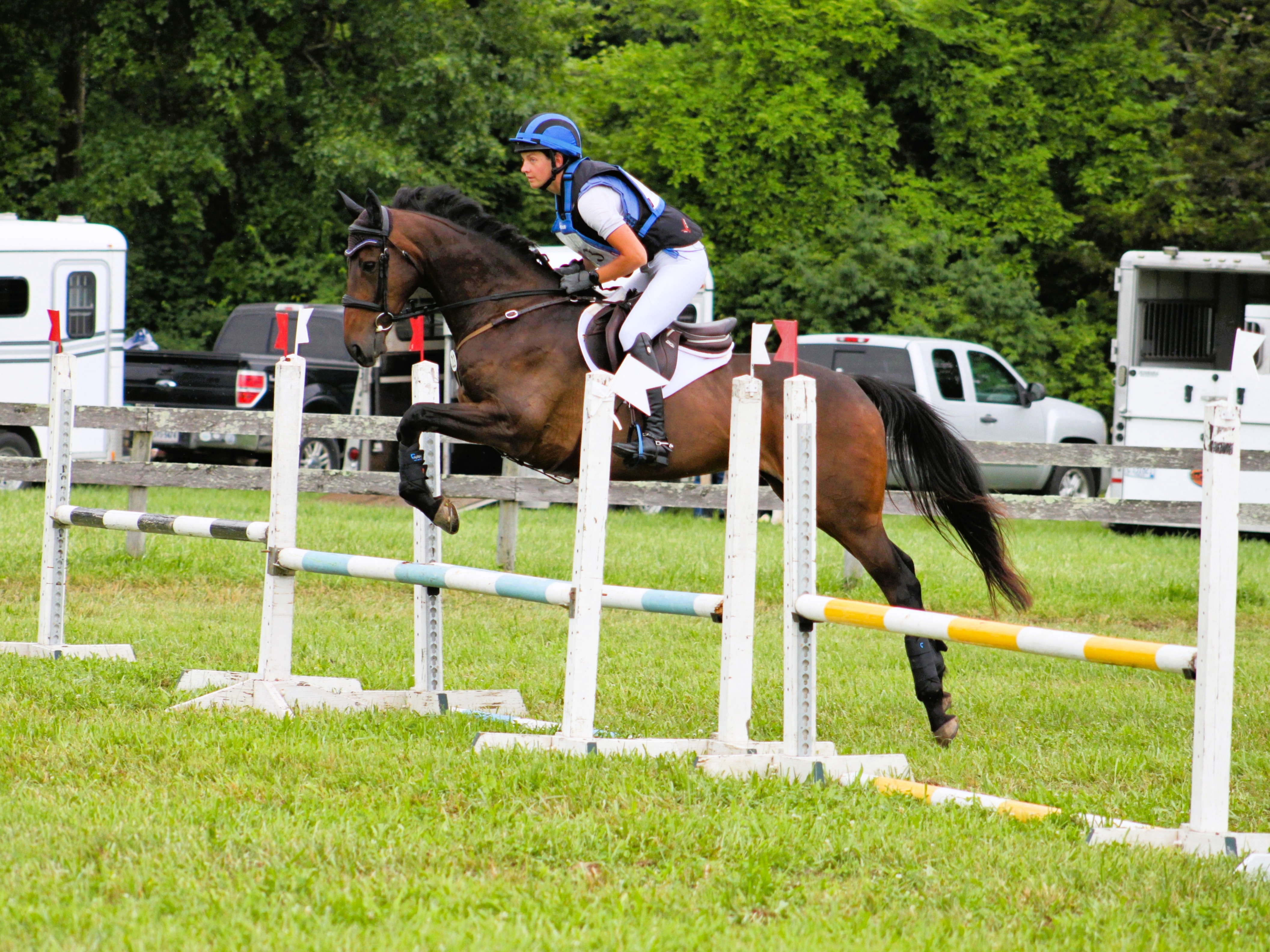From a distance, Kelsy Smith’s horse looks like most Preliminary-level event horses: he’s fit, he’s bay, and he’s over 16 hands. But if you look closely, you’ll notice one major difference between Huxley Heights and the other equines in his classes: Huxley does not wear horseshoes.
Eventing barefoot is not the norm in the Pacific Northwest, but that didn’t stop Smith and her Dutch WB x QH, Huxley, from taking on their debut season at Prelim without shoes. In 2013 they competed in five USEA horse trials, accumulating scores to earn them the title of Open Prelim Year-End Champion in USEA Area VII. And this season they plan to compete in their first CCI*… barefoot.
Smith has kept Huxley barefoot for his entire riding career. “Every horse is an individual,” she says, “for Hux I think barefoot offers more advantages [than shoes]: easier on his joints, better circulation in the hoof/leg, good traction, etc. Also, I never have to worry about if my horse pulls a shoe on course or what type of stud to use.”
Smith is quick to point out though that she “spends a fair amount of time conditioning his feet for the workload. Making sure he’s turned out as much as possible in a large space, graveling his paddock, and working him on different terrains: gravel logging roads, paved roads, hard and soft pasture/grass, etc.” She cites lifestyle management and a thoughtful hoof conditioning program as key to Hux’s soundness.
Smith is not the only eventer keeping her horse steel free; there seems to be a small but dedicated number of eventers competing barefoot in the U.S., especially at the lower levels. Amrita Eldine Ibold competes at Training level on a home-bred, self-trained Akhal-Teke gelding, Turkmen Air. Ibold challenges the status quo that a barefoot horse is at a disadvantage or lacks quality care; she points out, “According to the barefoot movement, a horse that needs shoes is a lame horse.”
Bridget Brewer has been taking her horses barefoot for seven years, including two OTTBs. She currently competes barefoot on her Novice-level mare, Moonshine, a 9 year old Irish Draught. Her reasons for keeping her horses barefoot boil down to health: “From a physics perspective, a bare hoof absorbs the shock better [than a shod hoof] as it expands on contact, which reduces the shock that gets transmitted up the leg into the joints and soft tissue. This same mechanism also provides increased blood pumping action.”
Undoubtedly, in three-day eventing barefoot eventers are a minority group. Shoes and studs are widely considered necessary tools of the trade, and it goes against the grain to keep a show horse unshod. Responses to barefoot competitors can range from genuine curiosity to grave concern. Some riders report push back from trainers or fellow competitors when they choose to compete without horseshoes. Amrita sums it up: “In eventing, most people think you are crazy for going without shoes and studs.”
But the reality is that barefoot does work for some event horses. Smith says, “I think more horses could go barefoot than people think or allow,” and she encourages folks who have horses with quality hooves to consider barefoot hoofcare. After all, to shoe or not to shoe is a conscious decision riders get to make when it comes to their horse’s welfare; it appears the USEA, USEF, or FEI do not have rules regarding shoeing.
There are pros and cons with any hoofcare decisions. To riders who want to venture into barefoot territory, Smith cautions: “Don’t expect to pull your horse’s shoes and be competing at the same level the next weekend. It takes time, conditioning, and work to ‘fit up’ the hoof to be able to handle the workload. If you try to push too hard, too fast you’ll set yourself back a long way, just like with anything else.”
Brewer elaborates on this, “Barefoot is not an easy road as today’s urban, mostly stalled horse lifestyles make it hard for the barefoot hoof to become robust and strong… Successful barefoot requires lots of movement, a low sugar diet, and frequent trims from someone who specializes in the barefoot trim. The hoof will adapt and change over time and the walls will thicken and the sole will develop a callous. Some horses are easier than others, and some may always be a tender on rocks and rough surfaces.”
Many recreational riders have embraced barefoot hoofcare for their horses, and if you look, you can find barefoot horses competing in mainstream sporthorse disciplines outside eventing. For example, some racehorse trainers are running unshod Thoroughbreds, and barefoot dressage horses are starting to make the headlines, with well-known riders like Shannon and Steffen Peters giving it a try. Brewer explains, “I am excited about some of the momentum barefoot is gaining as better information on how to be successful becomes available and the advantages to the horse is better known.”
When it comes to preserving equine health in our sport, honest discussions about what works and what doesn’t work for our horses is key. As a long-time “barefoot eventer,” I find that many of us are asked why when we don’t shoe, but few ask why when we DO shoe. At the end of the day, any conversation about what is best for our horses is a good one to have. What hoofcare practices work well for your eventing partner?





























